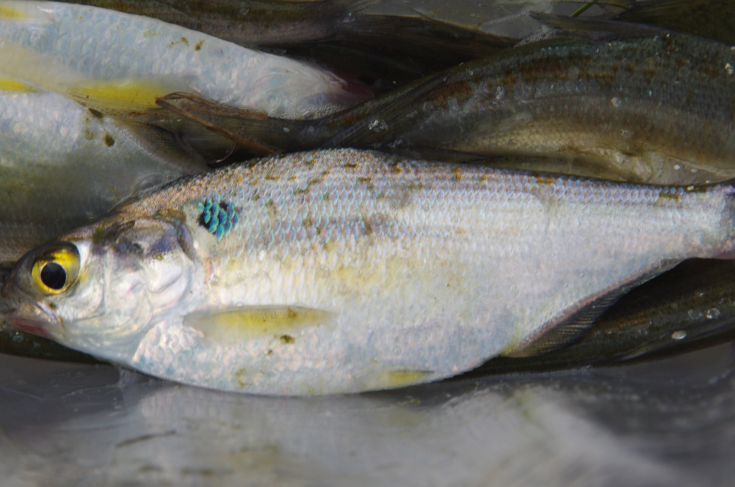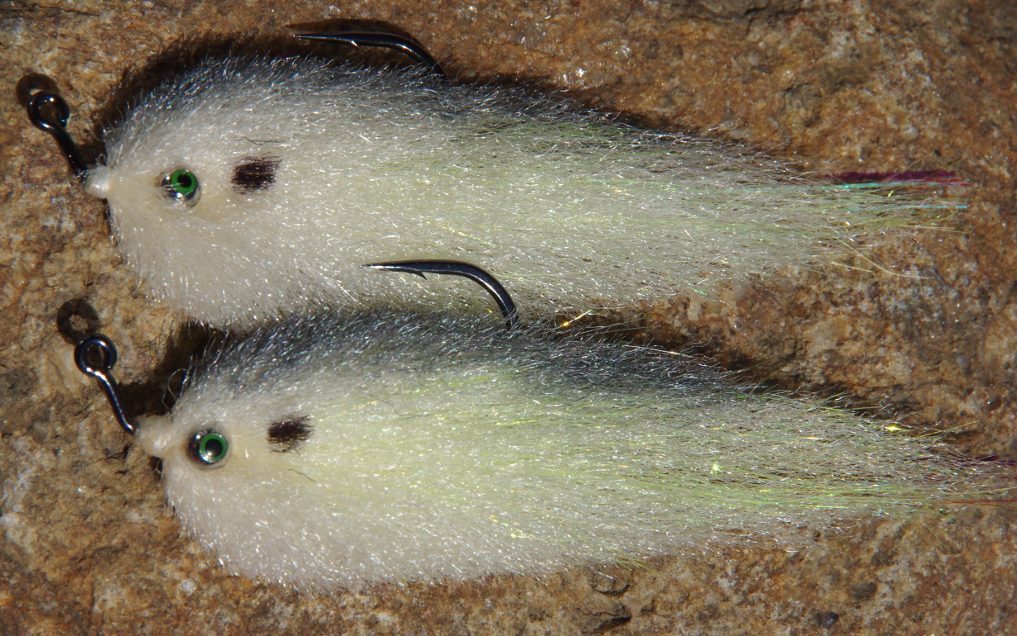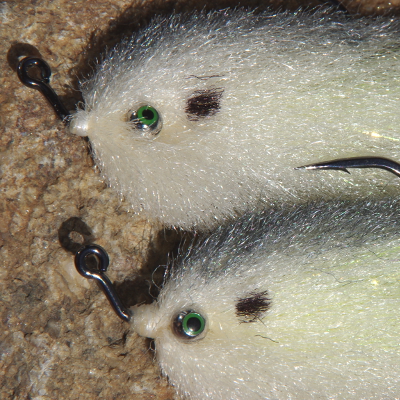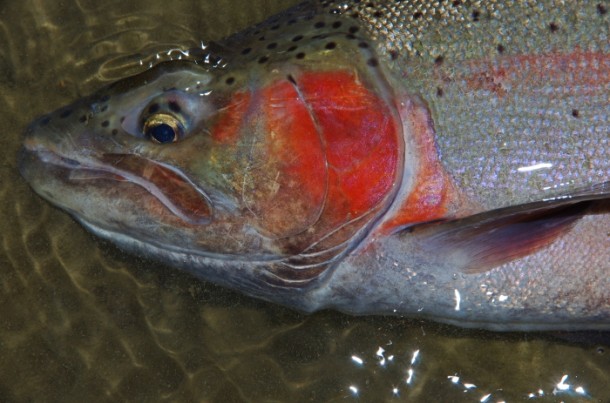Enrico Puglisi fibers and other fly tying materials have really given us a lot of great options tying a given baitfish pattern. They make fantastic-looking baitfish patterns like shad, bluegill, and other baitfish patterns, but at times they lack erratic action or major triggers when fish aren’t looking for a match-the-hatch style baitfish pattern. One way to add some more action is to add eyes to the pattern. In this case, you’re going to have a lot more options for working the fly. It’s a small addition, but it can really bring that nice profile to life. There are also a few little issues to consider when you’re tying the fly since the fly is tied upside down with dumbbell eyes. Take a look at the video below to help you tie an Enrico Puglisi baitfish pattern with dumbbell eyes. This particular version is a shad fly pattern.
With various species of fish in both saltwater and freshwater, there are times when a more realistic baitfish pattern is desirable. Shad, in particular, provide gamefish like stripers, hybrid striped bass, and largemouth bass with massive schools of free lunch. Wherever the shad go, they predators aren’t far behind. The answer is not to produce some lifeless looking baitfish pattern, so different actions in our realistic patterns will give us more options to trigger those fish even if they’re looking for a more lifelike representation. With this pattern I use dumbbell eyes that are almost too light to keep the hook riding point up. The result is that the fly is constantly fighting to stay upright. This produces a nice erratic action that looks like an injured baitfish. If you want a more traditional action, add a little bit heavier lead eyes or lighter hook so that the fly tracks a little straighter.
 The versatility of Enrico Puglisi fibers lies in their ability to produce flies of various sizes, from small to fairly large patterns. Added to this is the ability to produce accurate proportions to our fly patterns. We can achieve a simplistic profile that isn’t too bulky, or we can beef the fly up a bit. The fibers lack inherent action and flash, so we need to keep pushing the tying process until we produce flies that have the beautiful profile with erratic action. However, the fact that shad are quite prone to death and stunning from temperature changes allows us to use a pattern that doesn’t have horribly erratic action but rather an action that suggests the final movements of life. In this respect, the profile becomes that much more important. This pattern is as good a starting point as any, so use this as your starting point or let the creative juices flow. I’d love to hear what you’re doing with these baitfish patterns. For now, have fun with this pattern.
The versatility of Enrico Puglisi fibers lies in their ability to produce flies of various sizes, from small to fairly large patterns. Added to this is the ability to produce accurate proportions to our fly patterns. We can achieve a simplistic profile that isn’t too bulky, or we can beef the fly up a bit. The fibers lack inherent action and flash, so we need to keep pushing the tying process until we produce flies that have the beautiful profile with erratic action. However, the fact that shad are quite prone to death and stunning from temperature changes allows us to use a pattern that doesn’t have horribly erratic action but rather an action that suggests the final movements of life. In this respect, the profile becomes that much more important. This pattern is as good a starting point as any, so use this as your starting point or let the creative juices flow. I’d love to hear what you’re doing with these baitfish patterns. For now, have fun with this pattern.
- Hook: 60 degree jig hook whose shank is not too long (Gamakatsu 294: 3/0 in video)
- Thread: GSP 100; UTC 140 (white)
- Eyes: Dumbbell eyes of choice, but make sure they are heavy enough for the hook (I-Balz: BLZ-204 in video; this size will give the fly a more erratic action because it’s almost not heavy enough for this heavy hook)
- Flash: Opal Mirage Lateral Scale (1/69”)
- Flash: Wing-N-Flash (Fl. Yellow/Pearl)
- Body: Enrico Puglisi Fibers (white or cream; cream in video)
- Color: Permanent markers (silver metallic, black)
- Lacquer: Zap-a-gap (brushable) etc.





Fantastic job at the vice—-do you sell these flies if so I would like to buy a few from you. I am using them to fish for the Spotted Bass on my home waters of Smith Lake in Jasper Al. I would like to feature this fly on my blog once the fishing season starts for me on Smith in March. Thanks for sharing
Hi Bill,
Thanks for the kind words!
Unfortunately, I don’t tie commercially anymore.
I can tell you that these flies absolutely catch lots of big fish, particularly when there is a decent amount of current because they keep their profile.
Also, if fish are on shad, etc., like a lot of hybrids and striped bass, they work very well.
Good fishing to you, Bill!
I appreciate your help in tying these beautiful flies!
Hey Judy,
My pleasure! These flies really catch fish too!
Hope life’s good!
Thanks again,
Justin